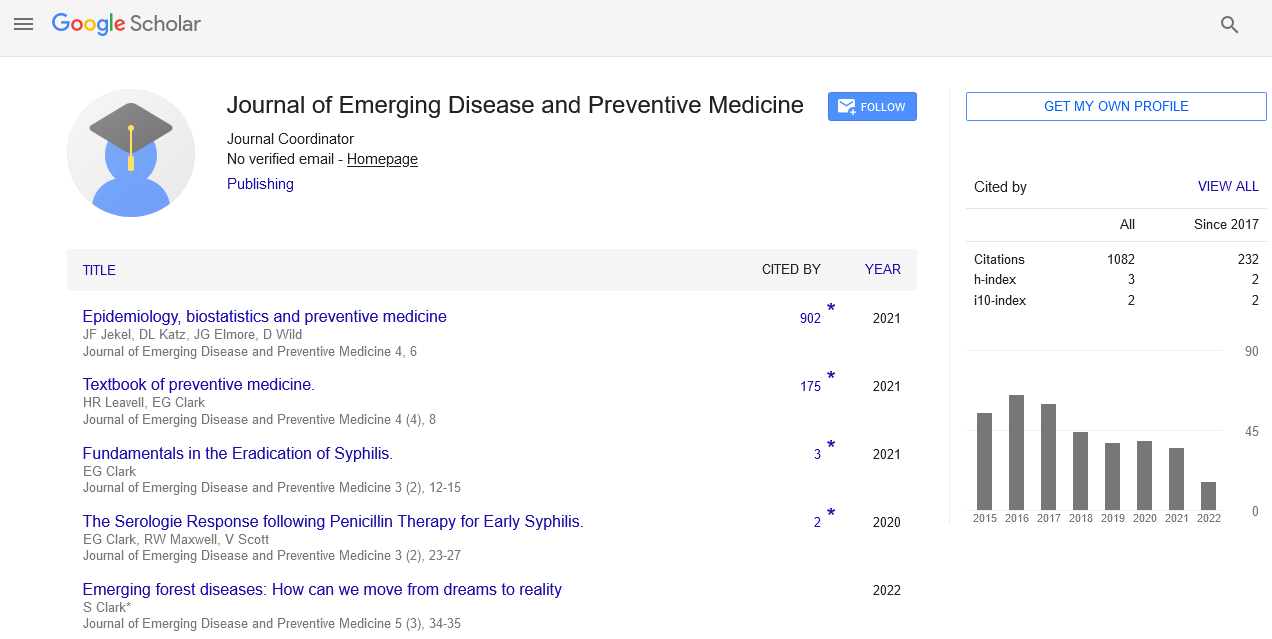Diagnosis, Treatment, and Stage of Lung Cancer
Received: 04-Dec-2021 Accepted Date: Dec 18, 2021; Published: 24-Dec-2021
This open-access article is distributed under the terms of the Creative Commons Attribution Non-Commercial License (CC BY-NC) (http://creativecommons.org/licenses/by-nc/4.0/), which permits reuse, distribution and reproduction of the article, provided that the original work is properly cited and the reuse is restricted to noncommercial purposes. For commercial reuse, contact reprints@pulsus.com
Introduction
Histologically, lung cancer is divided into two types: small cell lung cancer and non–small cell lung cancer. Cough, dyspnea, hemoptysis, as well as systemic symptoms including such weight loss as well as anorexia are most common side effects of lung disease. Chest radiography must be performed on high-risk patients presenting with symptoms. When no obvious alternative prognosis is found, computed tomography as well as possibly single - photon emission tomography should be conducted. A diagnostic evaluation is recommended if there is a high suspicion of lung cancer. The diagnostic assessment consists of three concurrent steps (tissue diagnosis, orchestrating, and functional evaluation), which all influence therapeutic intervention and prognosis. It is preferable using the least invasive technique possible, A pulmonologist, healthcare oncologist, radiation oncologist, pathologist, radiologist, but also thoracic surgeon are among the experts needed to diagnose a patient with lung disease. Non–small cell lung cancer samples were examined for mutants that, if present, can be handled with novel therapeutic molecular therapies. The family doctor should actively engage in the patient’s care to ensure that patient’s and family’s values and wishes are taken into account and, if necessary, to co - ordinate end-of-life care. Early palliative improves the quality of life and has the potential to prolong survival. Family doctors must focus on detection of lung and also prevention by empowering smoking cessation at each and every visit. The US Preventive Services Task Force recommends screening for lung disease with reduced computerized tomography, The American Academy of Family Physicians, on either hand, concludes that the evidence is lacking to recommend testing against or for. The decision to screen elevated patients should be made jointly by the patients and practitioners. In the United States in 2010, approximately 200,000 people were diagnosed with terminal cancer, and nearly 160,000 died as a direct result of the disease. 1,2 The median age at diagnosis is between 68 and 70 years old. Incidence and mortality rates vary greatly across states and parts of the United States, mirroring based on geography differences in tobacco use. The state of Utah does have the lowest incidence (28 per 100,000 people), while Kentucky has the greatest (101 per 100,000). 4 Among 2005 and 2009, the overall incidence of lung cancer decreased by 2%. Tobacco use is responsible for 80 to 90 percent of all lung cancers. 6,7 Exposure to secondhand cigarette smoke is also a significant risk factor, with younger age at exposed associated with a greater incidence of lung cancer. 8 Risk factors (Tables 16–14) are typically dose- and length of time, and many carcinogens work synergistically once merged with tobacco smoke. 9 Arsenic in water supply, for example, has indeed been linked to lung cancer when combined with tobacco secondhand smoke. 10,11 It is estimated that radon, a naturally radioactive gas discovered in the some homes, causes 21,000 cases of lung cancer each year. 12 Increased radon levels can occur in any home, but the highest levels are discovered in the Northern and Midwestern areas of the United States.





